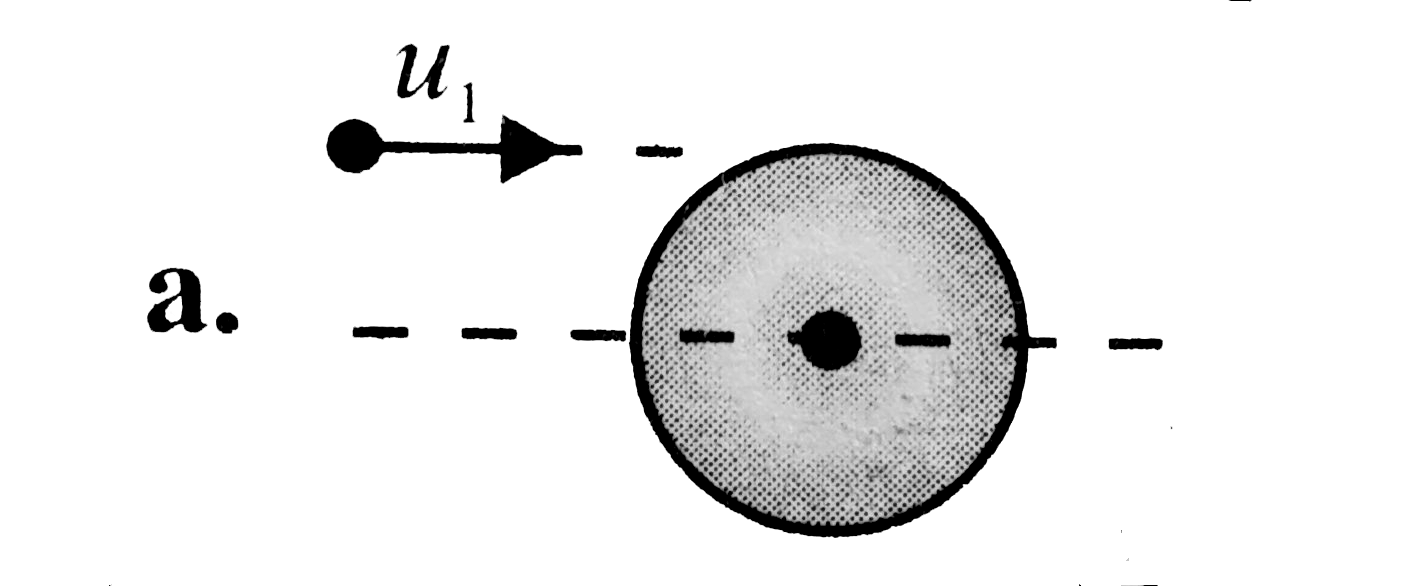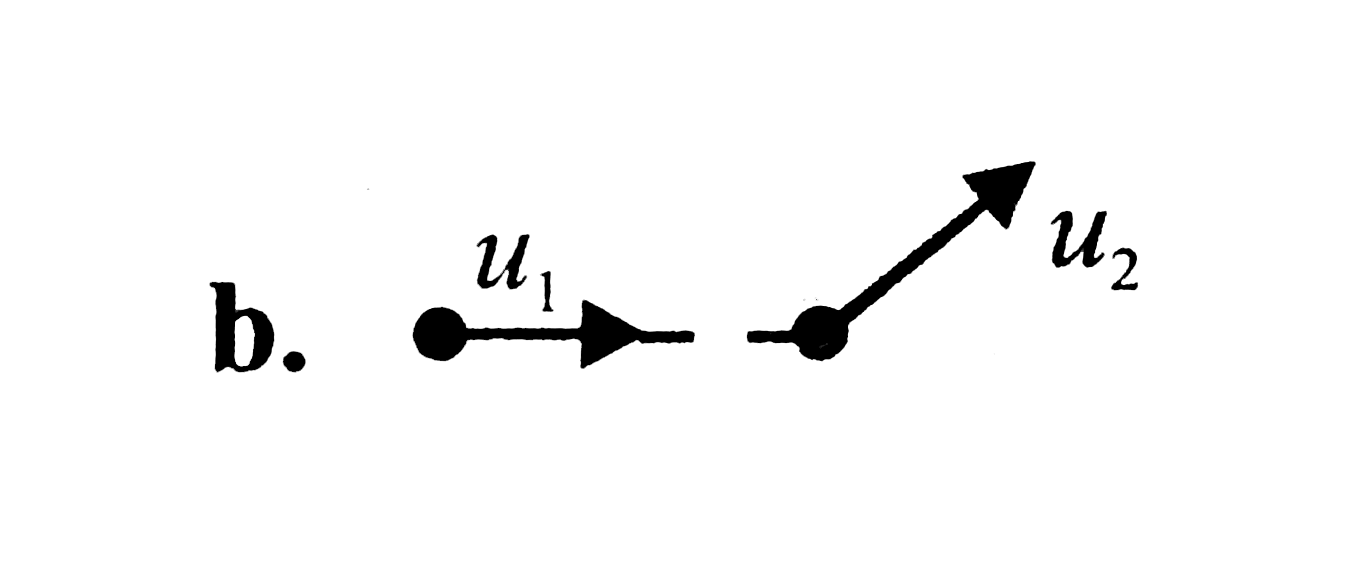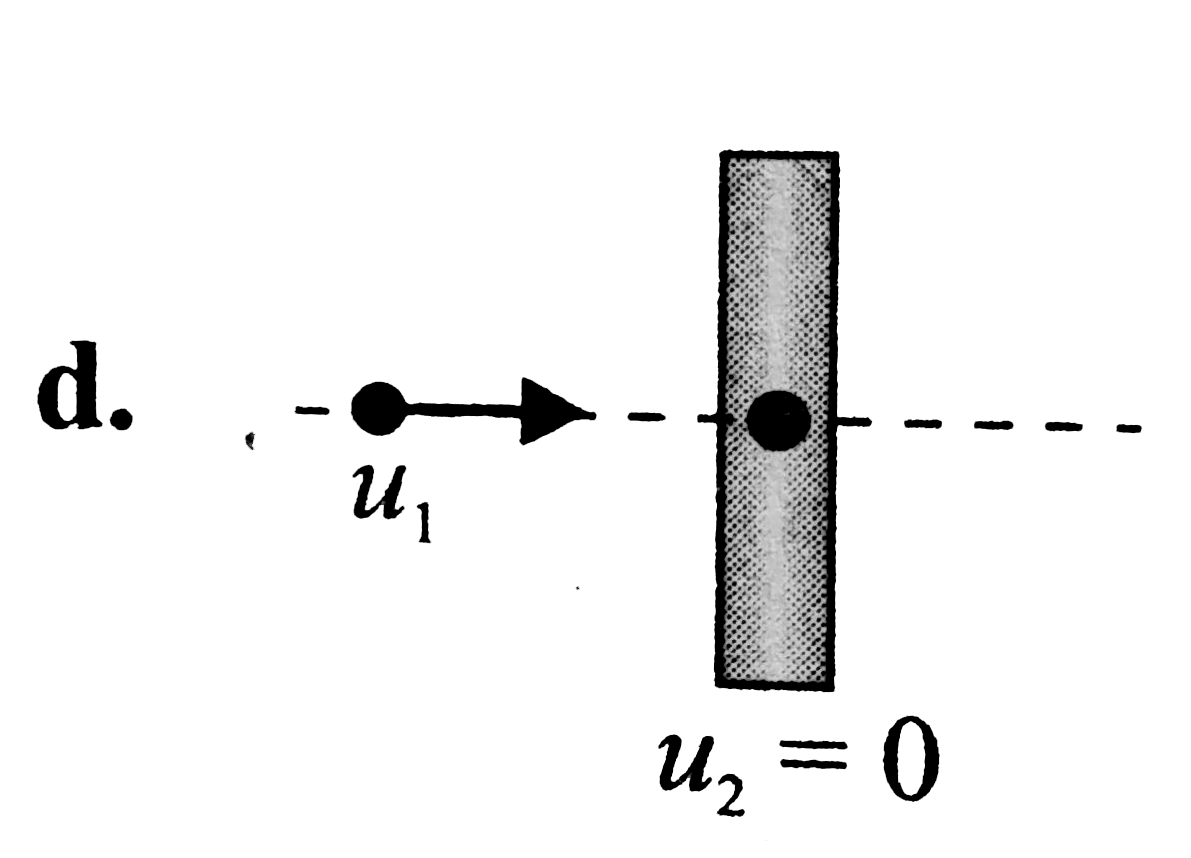Collision is a physical process in which two or more objects, either particle masses or rigid bodies, experience very high force of interaction for a very small duration. It is not essential for the objects to physically touch each other for collision to occur. Irrespective of the nature of interactive force and the nature of colliding bodies, Newton's second law holds good on the system. Hence, momentum of the system before and after the collision remains conserved if no appreciable external force acts on the system during collision.
The amount of energy loss during collision, if at all, is indeed dependent on the nature of colliding objects. The energy loss is observed to be maximum when objects stick together after collision. The terminology is to define collision as 'elastic' if no energy loss takes place and to define collision as 'plastic' for maximum energy loss. The behaviour of system after collision depends on the position of colliding objects as well. A unidirectional motion of colliding objects before collision can turn into two dimensional after collision if the line joining the centre of mass of the two colliding objects is not parallel to the direction of velocity of each particle before collision. Such type of collision is referred to as oblique collision which may be either two or three dimensional.
Which of the following collisions is one-dimensional?




The correct Answer is:D
To determine which of the given collisions is one-dimensional, we need to analyze the options based on the definition of one-dimensional and oblique collisions. Here’s a step-by-step solution:
Step 1: Understand the Definitions
- One-dimensional collision: This occurs when the motion of the colliding objects is along a single straight line. The velocities of the objects before and after the collision are parallel to each other.
- Oblique collision: This occurs when the line joining the centers of mass of the colliding objects is not parallel to the direction of their velocities before the collision, resulting in a change of direction.
Step 2: Analyze Each Option
1. Option A: Check if the velocities of the two particles are parallel to the line joining their centers of mass.
- If they are not parallel, this indicates an oblique collision. Therefore, this option is incorrect for one-dimensional collision.
2. Option B: Again, check the relationship between the velocities and the line joining the centers of mass.
- If the velocities are not parallel, this option is also incorrect for one-dimensional collision.
3. Option C: Consider the configuration of the particles and their velocities.
- If the line joining the centers of mass is not equal to the direction of the velocities, this indicates an oblique collision. Thus, this option is incorrect for one-dimensional collision.
4. Option D: Evaluate the situation where one particle has a velocity and the other has zero velocity.
- If the line joining the centers of mass is aligned with the direction of the moving particle's velocity, then this indicates a one-dimensional collision. Therefore, this option is correct.
Conclusion
Based on the analysis, the correct option that represents a one-dimensional collision is Option D.
- One-dimensional collision: This occurs when the motion of the colliding objects is along a single straight line. The velocities of the objects before and after the collision are parallel to each other.
- Oblique collision: This occurs when the line joining the centers of mass of the colliding objects is not parallel to the direction of their velocities before the collision, resulting in a change of direction.
1. Option A: Check if the velocities of the two particles are parallel to the line joining their centers of mass.
- If they are not parallel, this indicates an oblique collision. Therefore, this option is incorrect for one-dimensional collision.
- If the velocities are not parallel, this option is also incorrect for one-dimensional collision.
- If the line joining the centers of mass is not equal to the direction of the velocities, this indicates an oblique collision. Thus, this option is incorrect for one-dimensional collision.
- If the line joining the centers of mass is aligned with the direction of the moving particle's velocity, then this indicates a one-dimensional collision. Therefore, this option is correct.
Based on the analysis, the correct option that represents a one-dimensional collision is Option D.
Topper's Solved these Questions
- CENTRE OF MASSBOOK - CENGAGE PHYSICS ENGLISHCHAPTER - CENTRE OF MASSEXERCISE - Integer
16 Videos
- CENTRE OF MASSBOOK - CENGAGE PHYSICS ENGLISHCHAPTER - CENTRE OF MASSEXERCISE - Fill In The Blanks
2 Videos
- CENTRE OF MASSBOOK - CENGAGE PHYSICS ENGLISHCHAPTER - CENTRE OF MASSEXERCISE - Assertion - Reasoning
2 Videos
- CALORIMETRYBOOK - CENGAGE PHYSICS ENGLISHCHAPTER - CALORIMETRYEXERCISE - Solved Example
13 Videos
- DIMENSIONS & MEASUREMENTBOOK - CENGAGE PHYSICS ENGLISHCHAPTER - DIMENSIONS & MEASUREMENTEXERCISE - Integer
2 Videos
Similar Questions
Collision is a physical process in which two or more objects, either particle masses or rigid bodies, experience very high force of interaction for a very small duration. It is not essential for the objects to physically touch each other for collision to occur. Irrespective of the nature of interactive force and the nature of colliding bodies, Newton's second law holds good on the system. Hence, momentum of the system before and after the collision remains conserved if no appreciable external force acts on the system during collision.
The amount of energy loss during collision, if at all, is indeed dependent on the nature of colliding objects. The energy loss is observed to be maximum when objects stick together after collision. The terminology is to define collision as 'elastic' if no energy loss takes place and to define collision as 'plastic' for maximum energy loss. The behaviour of system after collision depends on the position of colliding objects as well. A unidirectional motion of colliding objects before collision can turn into two dimensional after collision if the line joining the centre of mass of the two colliding objects is not parallel to the direction of velocity of each particle before collision. Such type of collision is referred to as oblique collision which may be either two or three dimensional.
For which of the following collisions, the external force acting on the system during collision is not appreciable as mentioned in paragraph 1.
View SolutionCollision is a physical process in which two or more objects, either particle masses or rigid bodies, experience very high force of interaction for a very small duration. It is not essential for the objects to physically touch each other for collision to occur. Irrespective of the nature of interactive force and the nature of colliding bodies, Newton's second law holds good on the system. Hence, momentum of the system before and after the collision remains conserved if no appreciable external force acts on the system during collision.
The amount of energy loss during collision, if at all, is indeed dependent on the nature of colliding objects. The energy loss is observed to be maximum when objects stick together after collision. The terminology is to define collision as 'elastic' if no energy loss takes place and to define collision as 'plastic' for maximum energy loss. The behaviour of system after collision depends on the position of colliding objects as well. A unidirectional motion of colliding objects before collision can turn into two dimensional after collision if the line joining the centre of mass of the two colliding objects is not parallel to the direction of velocity of each particle before collision. Such type of collision is referred to as oblique collision which may be either two or three dimensional.
According to the definition of collision in paragraph I, which of the following physical process is not a collision?
View Solution
Knowledge Check
Two objects move toward each other, collide, and separate. If there was not net external force acting on the object, but some kinetic energy was lost, then
Athe collision was elastic and total linear momentum was conservedBthe collision was elastic and total linear mometnum was not conservedCthe collision was not elastic and total linear momentum was conservedDthe collision was not elastic and total linear momentum was not conserved
Collision is a physical process in which two or more objects, either particle masses or rigid bodies, experience very high force of interaction for a very small duration. It is not essential for the objects to physically touch each other for collision to occur. Irrespective of the nature of interactive force and the nature of colliding bodies, Newton's second law holds good on the system. Hence, momentum of the system before and after the collision remains conserved if no appreciable external force acts on the system during collision.
The amount of energy loss during collision, if at all, is indeed dependent on the nature of colliding objects. The energy loss is observed to be maximum when objects stick together after collision. The terminology is to define collision as 'elastic' if no energy loss takes place and to define collision as 'plastic' for maximum energy loss. The behaviour of system after collision depends on the position of colliding objects as well. A unidirectional motion of colliding objects before collision can turn into two dimensional after collision if the line joining the centre of mass of the two colliding objects is not parallel to the direction of velocity of each particle before collision. Such type of collision is referred to as oblique collision which may be either two or three dimensional.
According to the definition of oblique collision in the paragraph, which of the following collisions cannot be oblique'?
View SolutionWhen two bodies collide elastically, the force of interaction between them is
View SolutionTwo particles are seen to collide and move jointly together after the collision . During such a collision, for the total system,
View SolutionA : During collision between two objects, the momentum of colliding objects is conserved only in direction perpendicular to line of impact.
R : The force on colliding objects in direction perpendicular to line of impact is zero.
View SolutionAssertion : Animate object can accelerate in the absence of external force.
Reason : Newton's second law is not applicable on animate object.
View SolutionA moving body of mass m makes a head on elastic collision with another body of mass 2m which is initially at rest. Find the fraction of kinetic energy lost by the colliding particles after collision.
View SolutionAn object of mass m moving with speed u collides one dimentionally with another identical object at rest. Find their velocities after collision, if coefficient of restitution of collision is e.
View Solution
